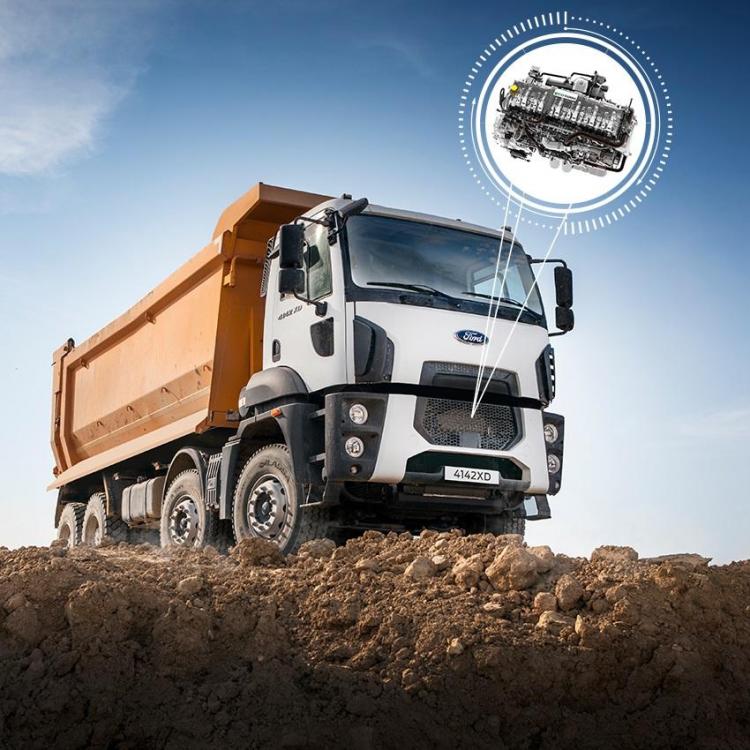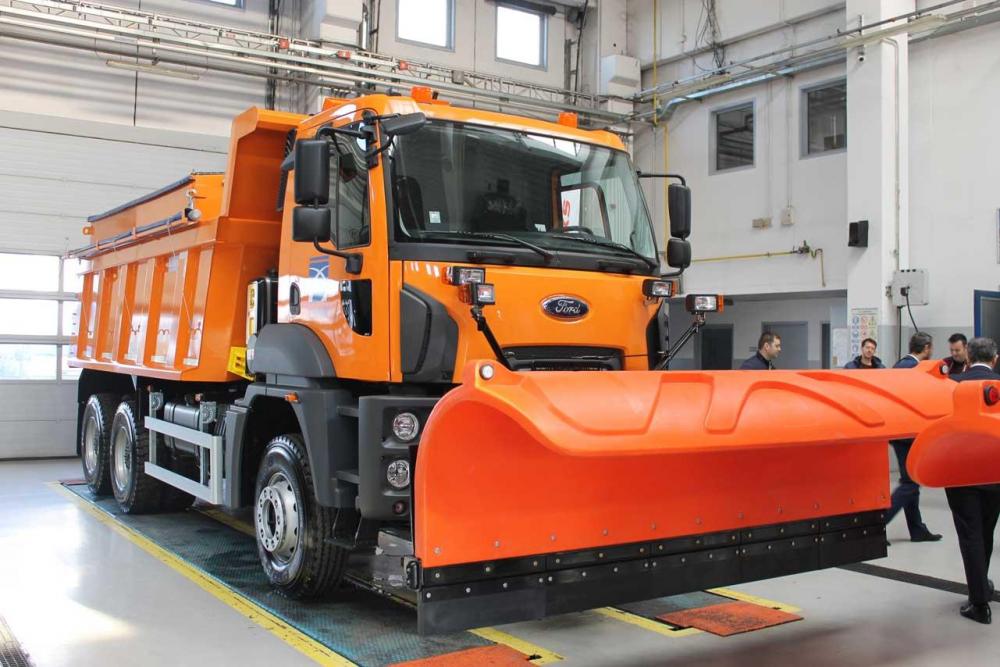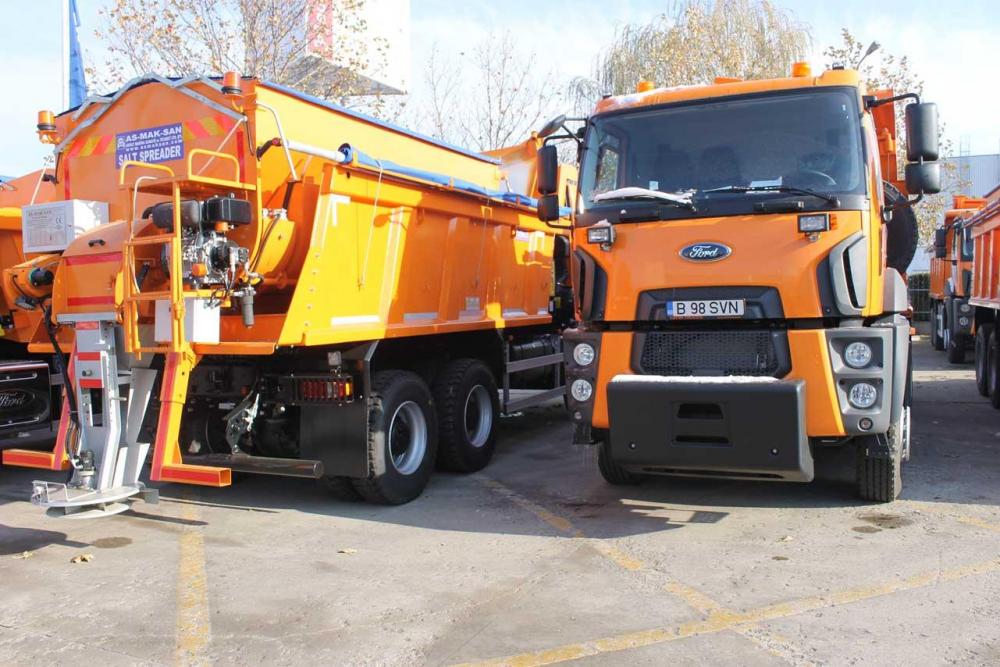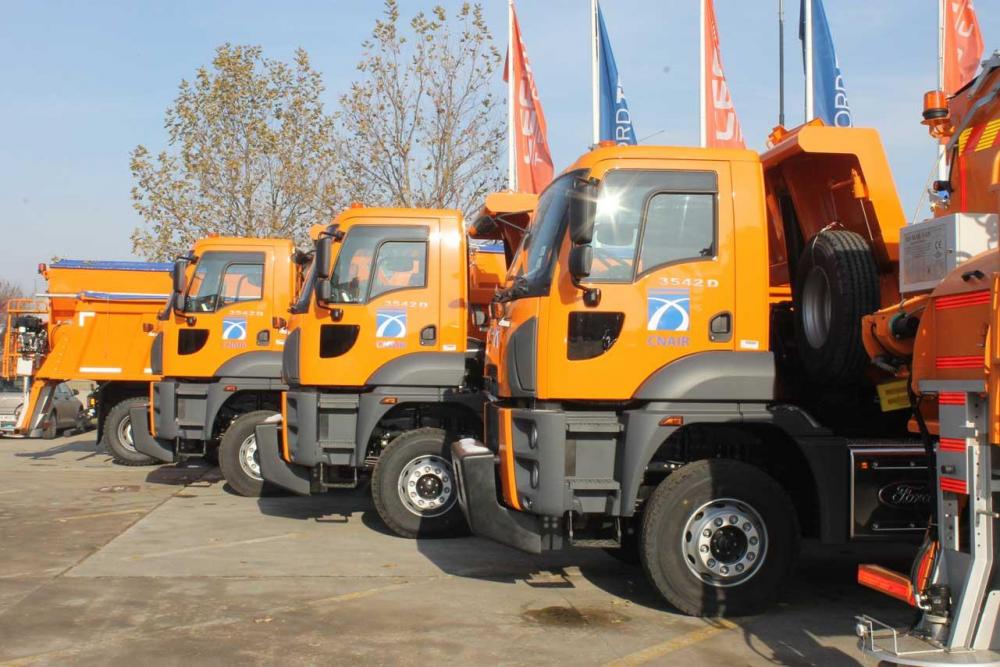
kscarbel2
Moderator-
Posts
18,886 -
Joined
-
Days Won
114
Content Type
Profiles
Forums
Gallery
Events
Blogs
BMT Wiki
Collections
Store
Everything posted by kscarbel2
-
MAN Truck & Bus Press Release / January 30, 2019 MAN Mining Solutions for Africa! Through this company portrait, you can see TGS Trucks in action in sand mines in the East of Tunisia. Let this video convince you that these MAN trucks are perfectly adapted to the tough conditions in mines. .
-
. . .
-
Commercial Motor / January 25, 2019 Charles Russel of Russell Transport shows off his classic V8-powered Scania 141. .
-
Commercial Motor / January 18, 2019 Heavy haulage specialist Smiths tells Truck & Driver why they run a Scania V8 to move their big loads. .
-
Limited edition Diamond T glider kit offering unveiled
kscarbel2 replied to kscarbel2's topic in Trucking News
-
GM Brands Have Cut Complimentary Maintenance from Three Years to One Drew Dorian, Car & Driver / January 30, 2019 General Motors has made changes to its brands' complimentary maintenance plans for 2019 model year vehicles. It now offers just one free service visit instead of the previous two or three visits (depending on brand). This sole free visit—which amounts to an oil change, a tire rotation, and a multipoint vehicle inspection—must be redeemed within the first year of ownership. GMC and Chevrolet both offered two complimentary scheduled maintenance visits on last year's models; the GMC website now shows details about the new one-visit program starting with 2019 models. Chevrolet has not yet updated its consumer website with details about its 2019 models’ complimentary scheduled maintenance plan, but a company representative has confirmed the brand is dropping its two year maintenance program in favor of a one-visit plan. A representative from Cadillac explained to us that the change aligns the company's offerings with those of many luxury rivals such as Audi, which offers exactly the same service. However, brands such as Jaguar and BMW continue their free-service programs, with Jaguar owners getting five years and BMW owners getting three years of complimentary maintenance. Cadillac and Buick have made no other changes to their standard warranty offerings, which currently are above average for the auto industry with six-year or 70,000-mile powertrain coverage. GMC and Chevrolet have held steady on their warranties as well but aren't as generous as GM's premium brands. For owners interested in prepaid maintenance plans, GM will continue to offer such products through franchised dealerships. The plans range widely in both cost and coverage—Buick, for example, offers plans as short as two years all the way up to 15 years—and can be made to cover basics such as oil changes or be far more inclusive by covering items such as spark plugs and air filters. We're hoping to hear more from representatives from each of the GM brands about why the company is making these changes and will update this article with more information as it becomes available.
-
Ford adding overtime Ranger production as first-month sales hit 1,200 Michael Martinez, Automotive News / January 30, 2019 DETROIT — Ford Motor Co. expects a total of 1,200 U.S. Ranger sales in January — the revived midsize pickup's first month on sale — and plans to start running overtime shifts at its Michigan Assembly Plant next week to keep up with demand. Kumar Galhotra, Ford's president of North America, on Wednesday said the Ranger is exceeding expectations, and that about 300,000 consumers already have indicated plans to purchase the vehicle. "Based on the orders coming in, and based on the hand-raisers, we think the demand's going to be so strong, that starting in February our assembly plant will be going into massive overtime," Galhotra said at a media briefing. A Ford spokesman declined to offer any additional details about the overtime schedule. Ford currently builds the Ranger on one shift at the plant, which recently was converted from small-car assembly to body-on-frame truck production. Ford hasn't sold the Ranger in the U.S. since 2011, when it ceded the segment to Toyota, General Motors and other rivals. Executives said the business case for the vehicle's return became clear as the F-150 full-size pickup got larger and more expensive. The previous Ranger regularly was among the segment's top sellers and No. 1 as recently as 2004. Ranger sales routinely totaled more than 300,000 a year in the 1990s before fading in the early 2000s. The new model starts at $25,395, including shipping, and tops out at more than $40,000. It enters an increasingly competitive segment as new entries including the Jeep Gladiator challenge the Toyota Tacoma, Chevrolet Colorado and GMC Canyon. .
-
-
Ford's return to Le Mans in 2016, Bob. Sharp looking trucks (1846Ts).
-
https://www.dni.gov/files/ODNI/documents/2019-ATA-SFR---SSCI.pdf?utm_source=Gov Delivery Email&utm_medium=Email&utm_campaign=Media Contacts Email
-
When you contacted your Mack brand dealer or Volvo's Mack brand customer satisfaction hotline for technical support, would they not assist you?
-
Ford Trucks International / February 19, 2018 .
-
Ford Trucks International / November 29, 2018 Ford Trucks, one of the largest international heavy truck manufacturers in the world, recently announced that it has selected F Trucks as the official dealer for Ford Trucks Heavy Commercial Vehicles in Czech Republic. F Trucks is a joint venture company of Auto In and Kar Group. The company will provide sales, after sales and spare parts to Ford Trucks customers in Prague. Ford Trucks will also continue to expand its network through F Trucks' 5 additional locations in Czech Republic by 2018 Auto In has been representing world leading automotive brands for more than 15 years and is one of the largest Ford dealers in Czech Republic. Kar Group runs a wide range of businesses including, logistics, parts distribution and Trucks & Bus services. This new partnership was announced and celebrated during a press event at the Corinthia Hotel Prague. The event was attended by Milos Pavlicek and Tomas Vratny the founders of Auto In and Kar Group, Vice President of Ford Trucks, Serhan Turfan, Director of International Markets at Ford Trucks, Emrah Duman, executives from Ford Trucks, Auto In and Kar Group and other prominent guests. Director of International Markets at Ford Trucks, Emrah Duman, said: “Since our 1st contact with two professional business groups, we understood that both sides share the same vision in business and will be good partners to each other in the future. We are very pleased to partner with F Trucks to launch our range of heavy commercial vehicles for the first time in Czech Republic. They are now expanding their successful Ford business with Ford Trucks distributorship, to serve our customers with a wide range of products from passenger cars to heavy commercial vehicles. With our new partner, F Trucks, we are committed to provide the highest levels of customer service and competitive after-sales solutions through dedicated facilities for sales, service and parts. I believe F Trucks will represent our brand in the best possible way in Czech Republic.” E6 Ecotorq Engine, the source of power, technology and efficiency in Ford Trucks: Improvement in fuel economy; higher performance with up to 480 PS power The new Ford Trucks series offers a range of power options from 330 to 480 PS with E6 emissions. The latest Ecotorq engines deliver better fuel economy than previous versions and are the most competitive in the segment, according to tests conducted by independent bodies — while increasing both the torque and power for performance in all conditions. The new Ford Trucks models have improved power but also braking force, with a braking system that is seven times stronger than in the previous generation. The retarder option and engine brake provide 600kW and 400kW of braking force respectively, for a total braking output of 1.000kW. With these new features, the new generation of Ford trucks provide greater reliability and safety. All vehicles are also offered with 10mm, 500-megapascal chassis frames that further improve the durability of the vehicle. The new Ford Trucks models also yield savings after purchase. Maintenance costs have been reduced, while service periods have been extended to reduce the scheduled downtime and provide a further competitive advantage for Ford customers in the logistics and construction sectors. The service periods extended to 120,000 km, offered for the Tractor and Construction series will allow the customers to have the most competitive maintenance advantage in the logistics and construction sectors. .
-
Bob, if I remember correctly, that covers the hitch while the plow is removed for the summer months. It's functional from a safety standpoint, and aesthetically appealing.
-
Ford Trucks International The advanced 12.7-litre Ecotorq engine at the heart of the Ford Trucks "Construction Series" will impress you with its superb balance of performance and fuel economy! .
-
-
Transport Topics / January 29, 2019 Global Deliveries Also Set New High Paccar Inc. reported record revenue in the fourth quarter and, excluding one-time benefits, higher net income. Annual revenue and net income set records, too, as it delivered 189,100 vehicles worldwide in 2018. Quarterly net income for the period ended Dec. 31 was $578.1 million, or $1.65 per diluted share. That compared with $589.2 million, or $1.67, in the fourth quarter of 2017, including $173.4 million of net tax benefits resulting from changes to U.S. tax law. Excluding the one-time tax benefits, Paccar reported adjusted net income of $415.8 million, or $1.18, in the fourth quarter of 2017. Quarterly revenue was a record $6.28 billion, a 15% increase compared with $5.45 billion reported in the same period in 2017. “The North American and European economies are projected to continue growing in 2019,” CEO Ron Armstrong said in a release. “Our customers are very profitable and benefiting from strong freight demand. Freight activity grew 6.6% in the U.S. in 2018, the highest growth in 20 years. Kenworth and Peterbilt’s 2019 build schedules are substantially full due to the robust orders. We expect 2019 to be another excellent year for Paccar.” The original equipment manufacturer also posted record quarterly worldwide deliveries of 50,400 trucks. Parts revenue of $970.9 million in the quarter was a record. For the full year, Paccar earned record net income of $2.20 billion, or $6.24 per diluted share, 31% higher than the $1.68 billion, or $4.75, earned in 2017. Paccar’s 2018 net income of $2.20 billion increased 47% compared with 2017 adjusted net income (non-GAAP) of $1.5 billion, or $4.26. Paccar achieved record revenue of $23.50 billion in 2018, a 21% increase compared to revenue of $19.46 billion in 2017.
-
I hear you. Plows are becoming obsolete except for heavy snowfall areas like Scandinavia. Rotary brooms have become the global standard in Western Europe and Northern China.
-
Owning a Peterbilt - The Features & Benefits
kscarbel2 replied to kscarbel2's topic in Trucking News
No. It’s a DAF LF market-adapted for North America. The Volkswagen Worker-based Mid-Rangers were nice trucks. -
NYC is following London on visibility requirements.
-
Peterbilt Motors Co. / January 28, 2019 . . . .
BigMackTrucks.com
BigMackTrucks.com is a support forum for antique, classic and modern Mack Trucks! The forum is owned and maintained by Watt's Truck Center, Inc. an independent, full service Mack dealer. The forums are not affiliated with Mack Trucks, Inc.
Our Vendors and Advertisers
Thank you for your support!


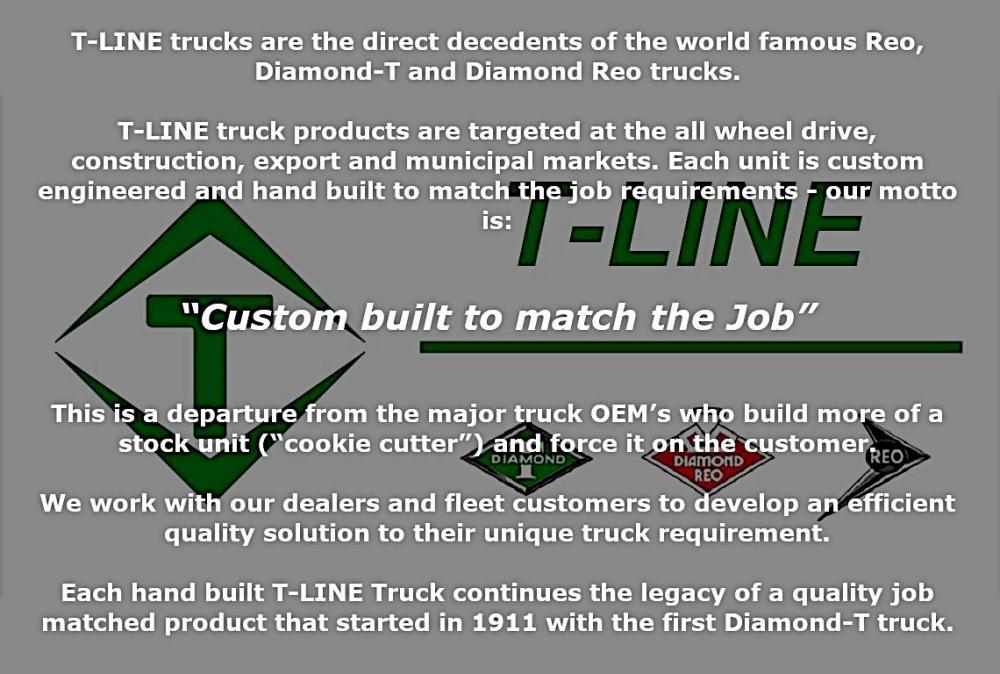
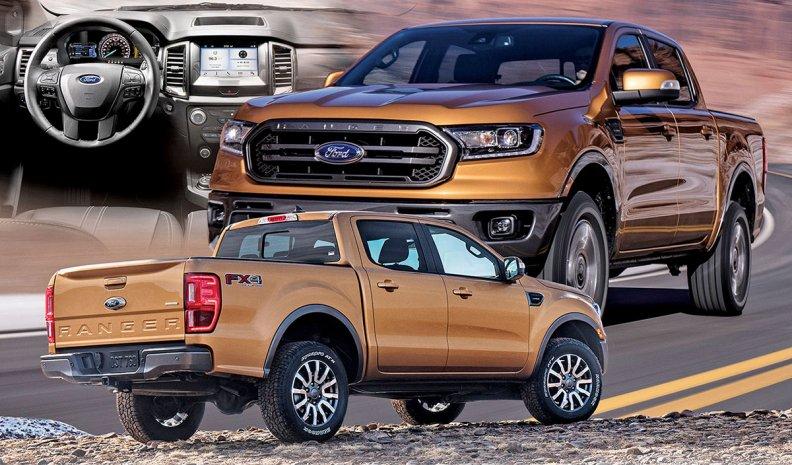

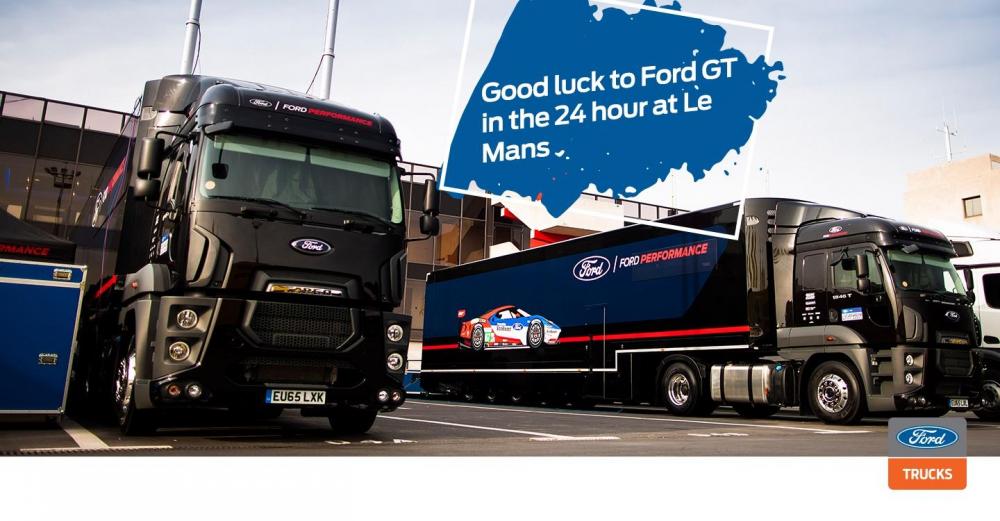
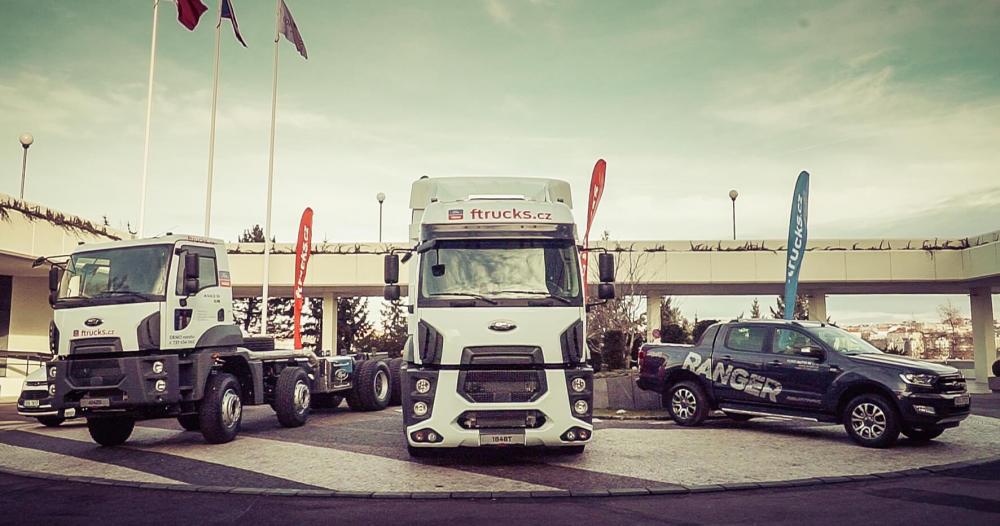
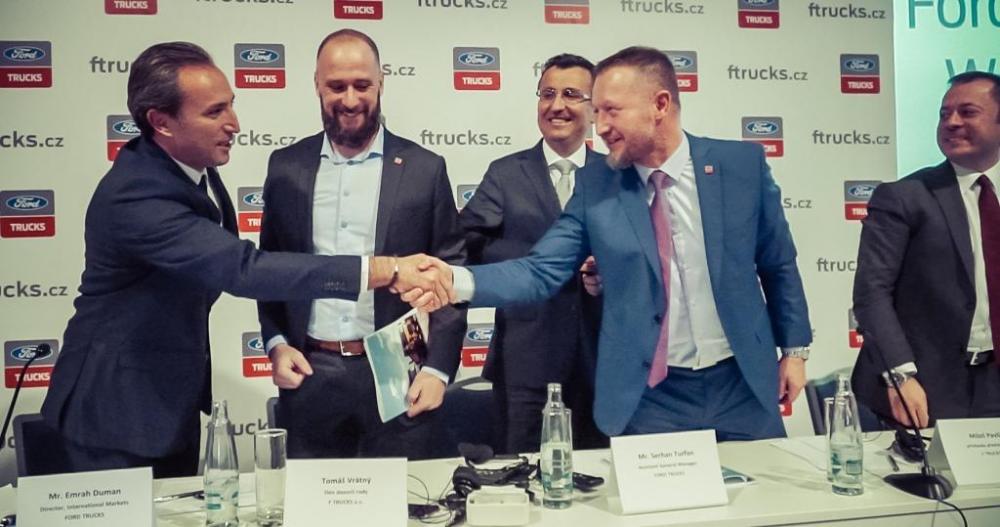
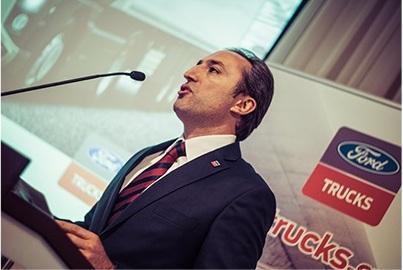
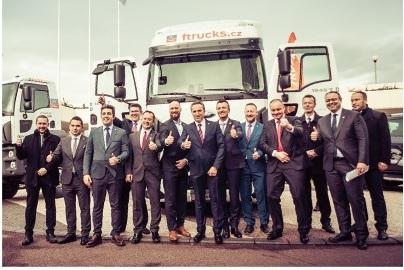
.jpg.e4b74db4b024c9482bba2b856b6d9034.jpg)
